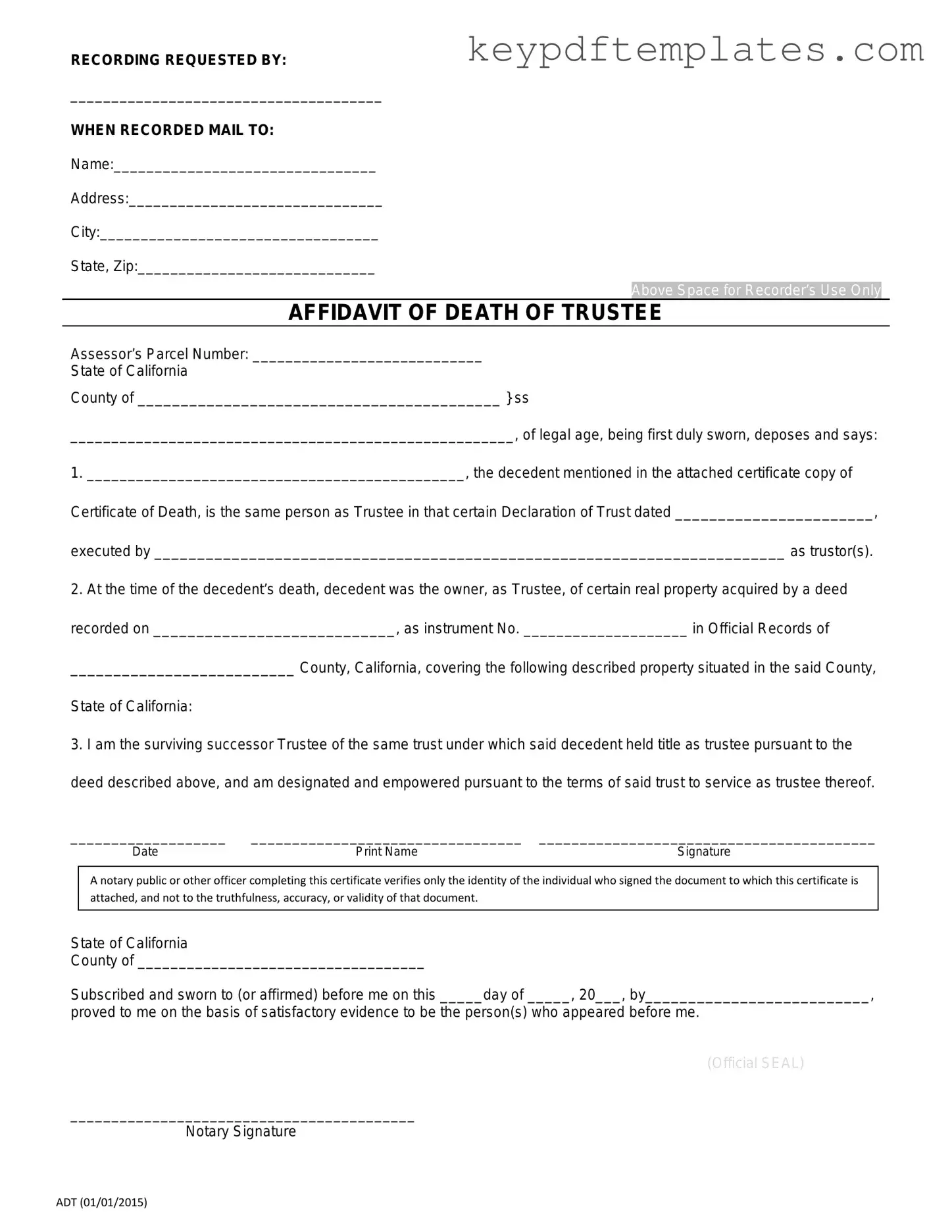Get California Affidavit of Death of a Trustee Form
The California Affidavit of Death of a Trustee is a legal document used to formally declare the death of an individual who served as a trustee in a trust. This affidavit helps to clarify the status of the trust and ensures that the trust's administration can continue smoothly after the trustee's passing. By filing this document, beneficiaries and successor trustees can navigate the transition with clarity and legal backing.
Modify Document Online
